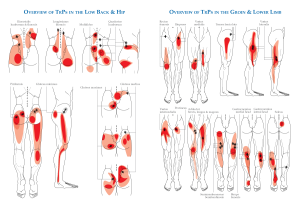Posterior Or Anterior Approach For Cervical Radiculopathy Treatment?

Category: | Author:
If you are dealing with neck pain caused by nerve damage or irritation, you are not alone. Many Americans are currently battling a condition known as cervical radiculopathy, which involves nerve damage or compression in the neck region. Some patients are able to successfully manage the condition through conservative means, but a small portion of patients will only find relief through a surgical procedure.
There are a few different ways that your spine surgeon can decompress your cervical spine, including using an anterior (front) or posterior (back) approach to access the damaged nerve. Is one approach better than the other? We take a closer look at what a new study has to say when it comes to pursuing an anterior or posterior approach to surgery for cervical radiculopathy.
ACDF Vs. PCF
When it comes to surgically correcting cervical radiculopathy, two procedures are commonly considered. There is the Anterior Cervical Discectomy and Fusion (ACDF) and the Posterior Cervical Foraminotomy (PCF). Both procedures address the nerve issue, but they do so in different ways, with the main difference being where the surgeon chooses to make the incision on the patient in order to access the spinal column. ACDF approaches from the front of the neck while PCF uses an incision on the back of the neck. Both procedures offer their own benefits and potential drawbacks, but which one is right for you?
As you might imagine, there is no perfect answer to that question that can be unilaterally applied to all patients. Some patients will be better candidates for ACDF, while others will likely achieve better outcomes through PCF. Which procedure you move forward with will depend on your specific circumstances and the advice of your treating physician.
With all that said, we’re going to take a closer look at a that attempted to see if one procedure was better than the other. For the study, researchers at Yale University reviewed data from 31,952 spine surgery patients over a 10-year period. It is clear that ACDF is currently the more recommended procedure, as the study examined 29,958 ACDF surgeries and 1,995 PCF operations. Here’s what they found for each:
- Posterior Cervical Foraminotomy – PCF was associated with significantly greater odds of aggregated serious adverse events, wound dehiscence, surgical site infection and pulmonary embolism.
- Anterior Cervical Discectomy and Fusion – When comparing the two methods, ACDF had a higher rate of hospital readmission, dysphagia and pneumonia.
Five years after the initial operation, patients who underwent PCF had a significantly higher surgical revision rate compared to those who pursued ACDF (19.0% vs. 14.8%). When revision surgery needed to be pursued following either type of procedure, surgeons typically usd a posterior approach during the subsequent operation.
Researchers theorized that it may be easier to completely decompress the problemed nerve through an anterior operation, but that doesn’t mean ACDF is always the right approach. ACDF seemingly offers better results when looking at this study, but it’s not without risk, and you need to talk with your surgeon to ensure you are getting the best type of care for your individual needs.
For more information about either operation, or to talk with a specialist about your spine discomfort, reach out to Dr. Sinicropi and the team at The Midwest Spine & Brain Institute today at (651) 430-3800.
Related




